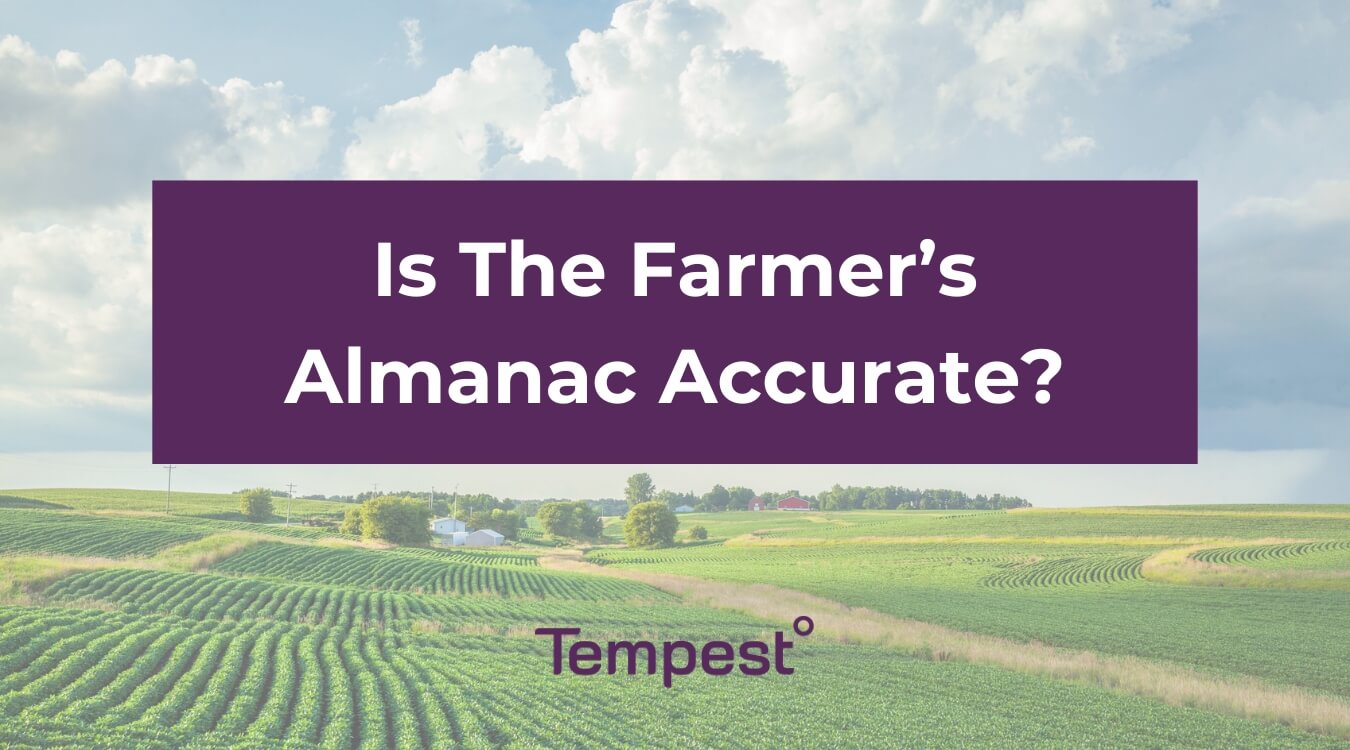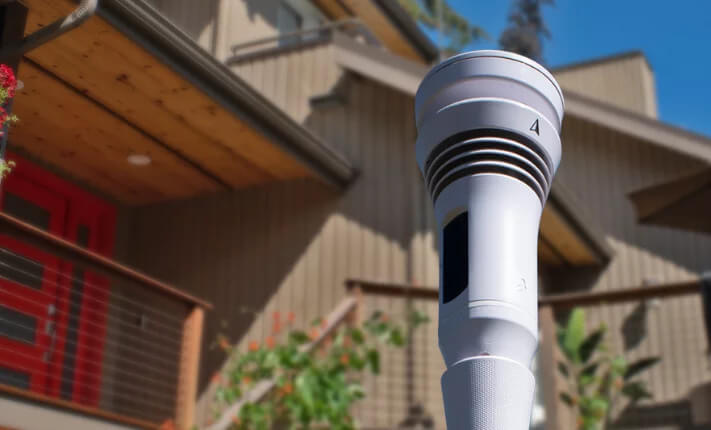
Since the 1700s, farmer’s almanacs have served as a long-standing weather resource, offering annual forecasts that many people still rely on today. But with the advancements in modern meteorology, how accurate is the farmer’s almanac?
With today’s advanced weather technology, the almanac can feel like a relic. Still, it remains a popular reference for gardeners, outdoor planners, and weather enthusiasts. While no forecast method is flawless, understanding what the almanac offers can help you decide how much trust to put into its predictions.
- What Is The Farmer’s Almanac?
- How Does The Farmer’s Almanac Predict Weather?
- How Accurate Is The Farmer’s Almanac?
- What Is The Most Accurate Way To Predict The Weather?
The Tempest Weather System is an all-in-one personal weather station that creates hyper-local forecasts from your backyard. Buy one today for more accurate forecasts!
What Is The Farmer’s Almanac?
There are actually two main publications often referred to as The Farmer’s Almanac:
- The Old Farmer’s Almanac, first published in 1792, is the oldest continuously published periodical in the United States. Its new editions are typically released in early September.
- Farmers’ Almanac (with a different publisher and no “Old” in the name) was established in 1818 and is also released annually.
Both versions contain long-range weather forecasts, seasonal advice, gardening tips, and lifestyle content. You can purchase them in print or digital formats, making them accessible to anyone curious about the coming seasons.
While each almanac has its own distinct style, both offer similar tools for anticipating weather patterns throughout the year.
How Does The Farmer’s Almanac Predict Weather?
Many people are curious about how farmer’s almanacs predict weather, especially since their methods aren’t as transparent as modern meteorological services. According to the publishers, the almanacs rely on proprietary formulas developed at the time of their founding.
These formulas combine elements such as:
- Solar activity, including sunspot cycles
- Lunar phases and planetary positions
- Recent weather patterns and historical weather conditions
The Old Farmer’s Almanac cites three core disciplines: solar science, climatology, and meteorology. It also claims to factor in modern climate change when adjusting weather predictions.
However, the exact process behind these predictions remains vague. Unlike public weather models used by meteorologists, the almanac’s methodology isn’t peer-reviewed. This lack of scientific validation is part of why many experts approach its accuracy with skepticism.
What is the best gardening weather? How moist should soil be? How do you conserve water? Learn about these gardening topics in our guides.
How Accurate Is The Farmer’s Almanac?
The almanacs themselves claim their forecasts are accurate 80% of the time. But, independent reviews say otherwise. A study by the University of Illinois found that the Farmers’ Almanac was only about 52% accurate, roughly equivalent to flipping a coin.
So, how accurate is the Farmer’s Almanac? It depends on how you’re using it. While it doesn’t provide pinpoint forecasts, it may offer a general sense of whether a season will trend warmer, colder, wetter, or drier than average. For someone planting crops or planning long-term outdoor projects, this broad context might still be helpful.
That said, if you need specific, short-term, or hyper-local forecasts, the almanac is not the tool to rely on.
What Is The Most Accurate Way To Predict The Weather?
If the farmer’s almanac isn’t the best bet for reliable forecasting, what is? Today, meteorologists use a range of powerful tools to predict the weather with impressive accuracy. These include:
- Satellite imagery
- Radar systems
- Atmospheric models
- Real-time data from weather stations
Many of these models are run by organizations like the National Weather Service, and they’re updated multiple times per day.
For everyday use, people rely on weather apps or local news stations, which synthesize this data into user-friendly forecasts. However, if you live in a rural or remote area or simply want more control over your own weather data, a personal weather station is a great option.
The Tempest Weather System is a compact, easy-to-install device that provides hyper-local forecasts right from your backyard. It measures wind, rain, temperature, humidity, and more, sending updates straight to your phone or smart home setup. Unlike generic apps that rely on regional data, Tempest gives you precise conditions from your exact location.
Get Accurate Local Weather Readings With The Tempest Weather System
Both The Old Farmer’s Almanac and the Farmers’ Almanac have been around for centuries. While they still provide value for readers looking for seasonal context or gardening advice, they simply don’t offer the precision of modern forecasting tools.
For those who need accurate, real-time weather updates, a personal weather station is a more effective solution. The Tempest Weather System is an all-in-one device that gives you professional-grade data with none of the complexity. It’s ideal for gardeners, hobbyists, and anyone who wants better insight into their local weather patterns. Get one today!
